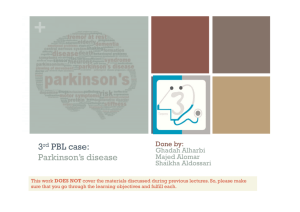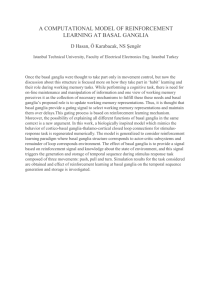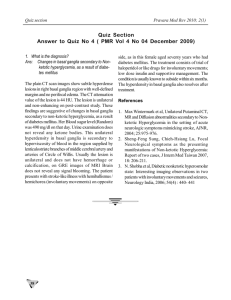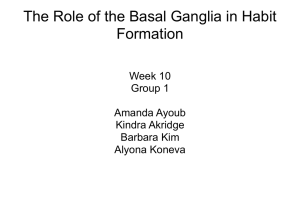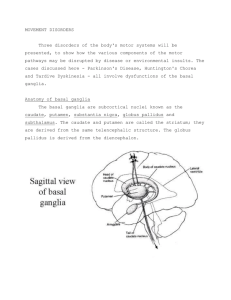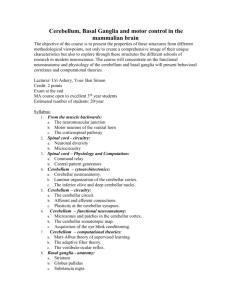Ann M. Graybiel, Ph.D
advertisement
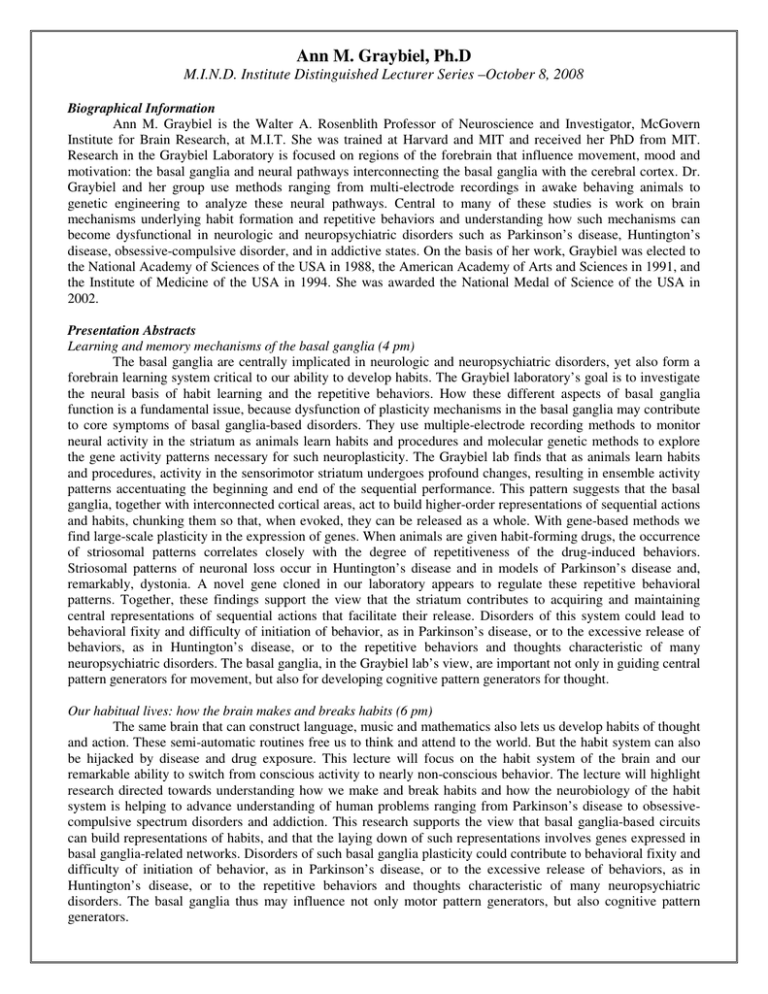
Ann M. Graybiel, Ph.D M.I.N.D. Institute Distinguished Lecturer Series –October 8, 2008 Biographical Information Ann M. Graybiel is the Walter A. Rosenblith Professor of Neuroscience and Investigator, McGovern Institute for Brain Research, at M.I.T. She was trained at Harvard and MIT and received her PhD from MIT. Research in the Graybiel Laboratory is focused on regions of the forebrain that influence movement, mood and motivation: the basal ganglia and neural pathways interconnecting the basal ganglia with the cerebral cortex. Dr. Graybiel and her group use methods ranging from multi-electrode recordings in awake behaving animals to genetic engineering to analyze these neural pathways. Central to many of these studies is work on brain mechanisms underlying habit formation and repetitive behaviors and understanding how such mechanisms can become dysfunctional in neurologic and neuropsychiatric disorders such as Parkinson’s disease, Huntington’s disease, obsessive-compulsive disorder, and in addictive states. On the basis of her work, Graybiel was elected to the National Academy of Sciences of the USA in 1988, the American Academy of Arts and Sciences in 1991, and the Institute of Medicine of the USA in 1994. She was awarded the National Medal of Science of the USA in 2002. Presentation Abstracts Learning and memory mechanisms of the basal ganglia (4 pm) The basal ganglia are centrally implicated in neurologic and neuropsychiatric disorders, yet also form a forebrain learning system critical to our ability to develop habits. The Graybiel laboratory’s goal is to investigate the neural basis of habit learning and the repetitive behaviors. How these different aspects of basal ganglia function is a fundamental issue, because dysfunction of plasticity mechanisms in the basal ganglia may contribute to core symptoms of basal ganglia-based disorders. They use multiple-electrode recording methods to monitor neural activity in the striatum as animals learn habits and procedures and molecular genetic methods to explore the gene activity patterns necessary for such neuroplasticity. The Graybiel lab finds that as animals learn habits and procedures, activity in the sensorimotor striatum undergoes profound changes, resulting in ensemble activity patterns accentuating the beginning and end of the sequential performance. This pattern suggests that the basal ganglia, together with interconnected cortical areas, act to build higher-order representations of sequential actions and habits, chunking them so that, when evoked, they can be released as a whole. With gene-based methods we find large-scale plasticity in the expression of genes. When animals are given habit-forming drugs, the occurrence of striosomal patterns correlates closely with the degree of repetitiveness of the drug-induced behaviors. Striosomal patterns of neuronal loss occur in Huntington’s disease and in models of Parkinson’s disease and, remarkably, dystonia. A novel gene cloned in our laboratory appears to regulate these repetitive behavioral patterns. Together, these findings support the view that the striatum contributes to acquiring and maintaining central representations of sequential actions that facilitate their release. Disorders of this system could lead to behavioral fixity and difficulty of initiation of behavior, as in Parkinson’s disease, or to the excessive release of behaviors, as in Huntington’s disease, or to the repetitive behaviors and thoughts characteristic of many neuropsychiatric disorders. The basal ganglia, in the Graybiel lab’s view, are important not only in guiding central pattern generators for movement, but also for developing cognitive pattern generators for thought. Our habitual lives: how the brain makes and breaks habits (6 pm) The same brain that can construct language, music and mathematics also lets us develop habits of thought and action. These semi-automatic routines free us to think and attend to the world. But the habit system can also be hijacked by disease and drug exposure. This lecture will focus on the habit system of the brain and our remarkable ability to switch from conscious activity to nearly non-conscious behavior. The lecture will highlight research directed towards understanding how we make and break habits and how the neurobiology of the habit system is helping to advance understanding of human problems ranging from Parkinson’s disease to obsessivecompulsive spectrum disorders and addiction. This research supports the view that basal ganglia-based circuits can build representations of habits, and that the laying down of such representations involves genes expressed in basal ganglia-related networks. Disorders of such basal ganglia plasticity could contribute to behavioral fixity and difficulty of initiation of behavior, as in Parkinson’s disease, or to the excessive release of behaviors, as in Huntington’s disease, or to the repetitive behaviors and thoughts characteristic of many neuropsychiatric disorders. The basal ganglia thus may influence not only motor pattern generators, but also cognitive pattern generators.
